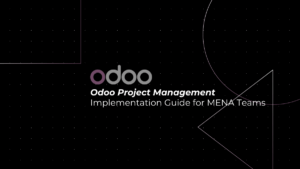Table of Contents
ToggleTable of Contents
- Introduction: The Digital Transformation Challenge
- Understanding Digital Transformation
- Why Reskilling and Upskilling Matter
- Key Skills for the Digital Era
- Strategies for Workforce Development
- AI and the Future of Work
- Implementing a Learning Culture
- Conclusion: Your Path Forward
- Call to Action
- Additional Resources
Introduction: The Digital Transformation Challenge
In the rapidly evolving landscape of digital transformation, businesses are experiencing unprecedented technological shifts. AI integration, automation, and emerging technologies are fundamentally reshaping how we work, learn, and grow professionally.
What You’ll Learn
- The critical importance of reskilling and upskilling
- How technology is changing workforce dynamics
- Strategies to future-proof your career
Understanding Digital Transformation
Key Characteristics
- Continuous technological innovation
- Adaptive organizational structures
- Customer-centric approach
- Data-driven decision making
Digital transformation is more than just technological implementation—it’s a holistic reimagining of business processes, organizational culture, and customer experiences.
Why Reskilling and Upskilling Matter
Bridging the Skills Gap
As technologies evolve rapidly, a significant skills gap emerges between existing workforce capabilities and emerging job requirements. Reskilling and upskilling are critical strategies to:
- Maintain workforce relevance
- Reduce unemployment risks
- Enhance organizational adaptability
Economic Imperative
According to recent studies, over 54% of all employees will require significant reskilling by 2022, highlighting the urgent need for continuous learning.
Key Skills for the Digital Era
Essential Competencies
- Digital Literacy
- Data analysis
- Digital collaboration tools
- Cloud computing basics
- Technological Skills
- AI and machine learning fundamentals
- Cybersecurity awareness
- Automation understanding
- Soft Skills
- Adaptability
- Critical thinking
- Emotional intelligence
- Continuous learning mindset
Strategies for Workforce Development
Effective Reskilling Approaches
- Personalized Learning Paths
- Individual skill assessments
- Customized training programs
- Micro-learning modules
- Organizational Support
- Dedicated learning budgets
- Mentorship programs
- Cross-functional training opportunities
- Technology-Enabled Learning
- Online learning platforms
- Virtual reality training
- AI-powered skill recommendation systems
AI and the Future of Work
AI’s Transformative Impact
- Job role augmentation, not just replacement
- Enhanced productivity through intelligent systems
- New job categories emerging
Preparing for AI Integration
- Develop complementary skills
- Understand AI’s potential and limitations
- Embrace collaborative intelligence
Implementing a Learning Culture
Organizational Strategies
- Leadership commitment
- Continuous learning incentives
- Regular skill gap analysis
- Flexible learning environments
- Recognition of learning achievements
Individual Responsibility
- Proactive skill development
- Curiosity-driven learning
- Networking and knowledge sharing
Conclusion: Your Path Forward
The digital transformation journey is ongoing. Reskilling and upskilling are not just career strategies—they’re survival mechanisms in an increasingly complex technological landscape.
Are you ready to future-proof your career?
PyramidBITS offers comprehensive digital transformation and skill development solutions tailored to your unique professional needs.



